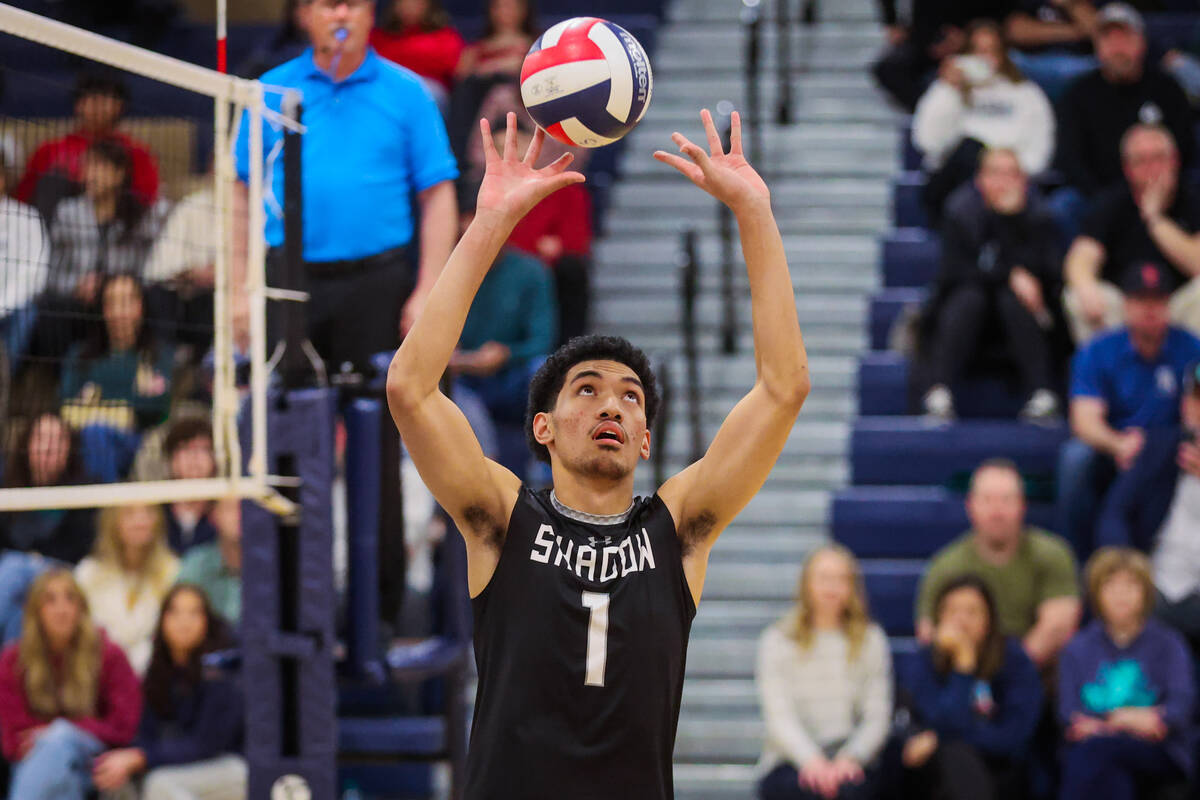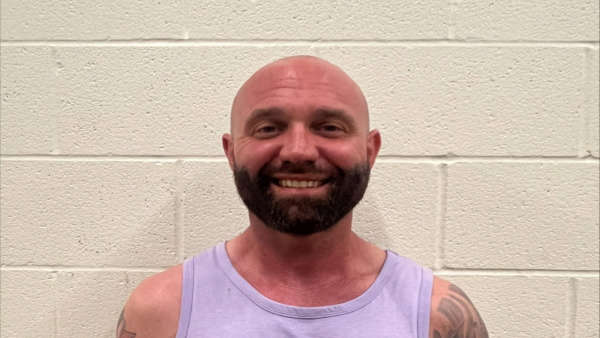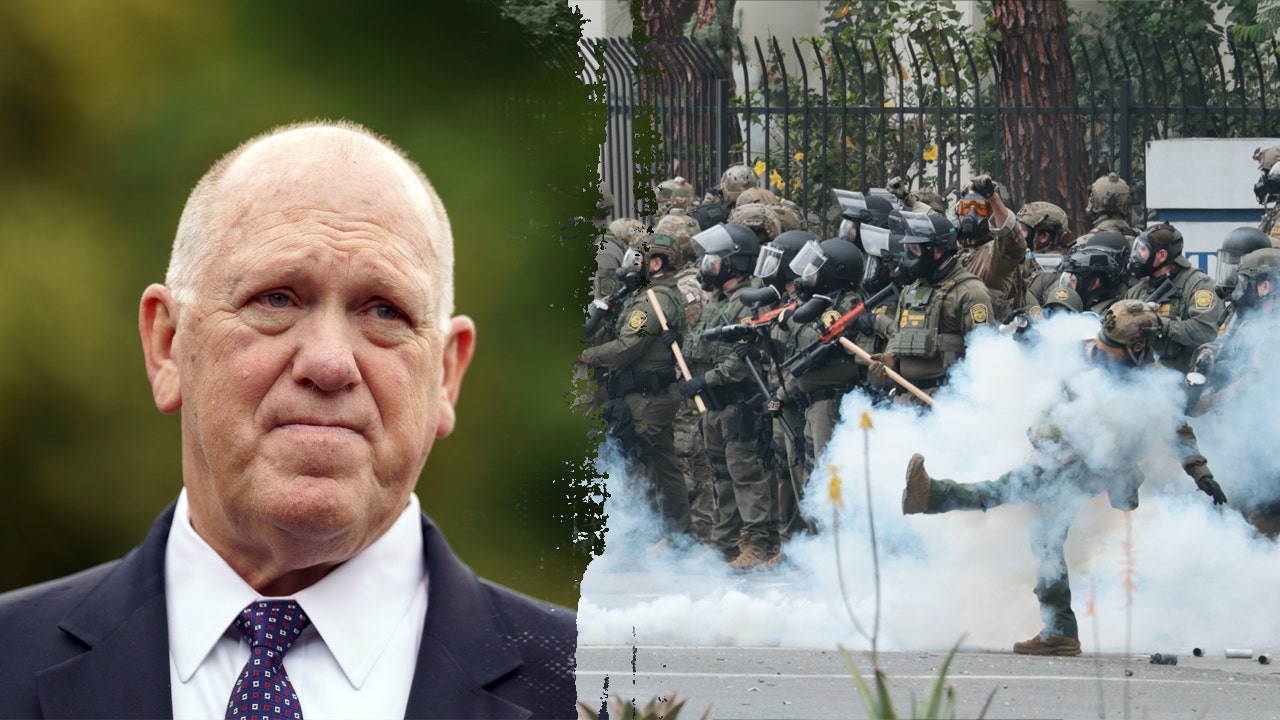Sports
Coveted rookie card of Pirates star Paul Skenes pulled by young collector after offer from MLB team
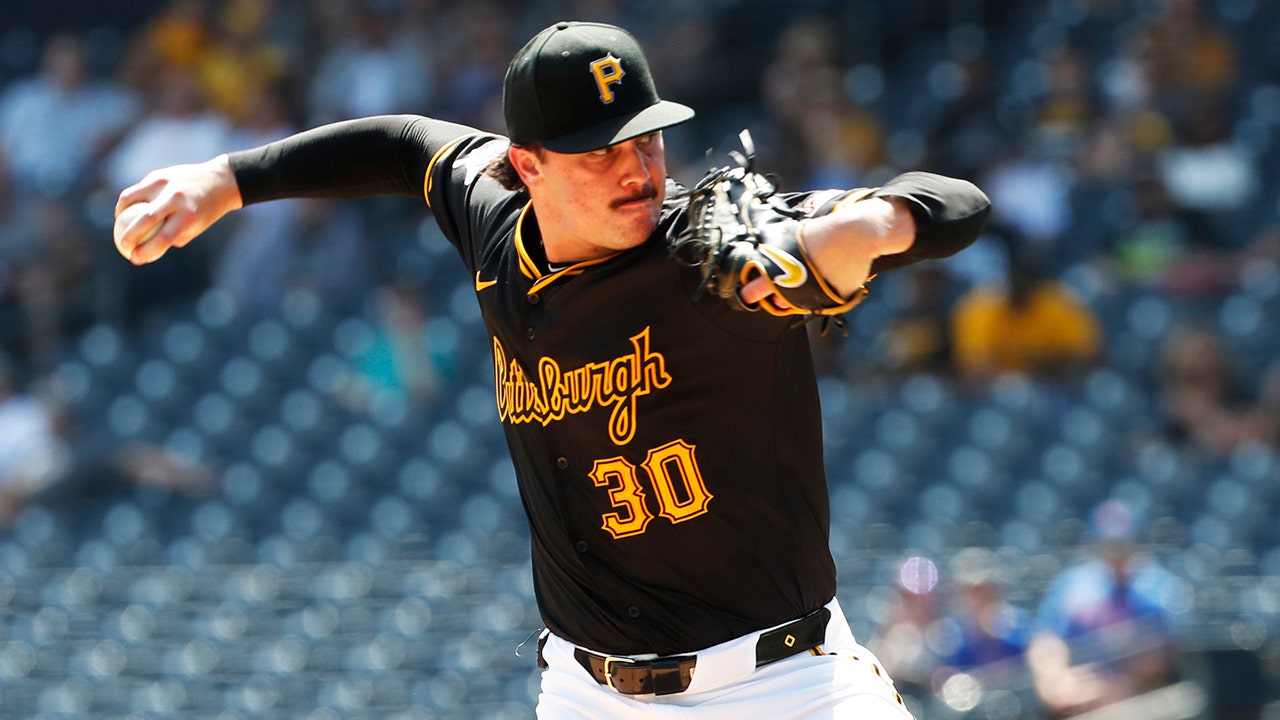
The coveted one-of-a-kind autographed MLB debut patch card of Pittsburgh Pirates pitcher Paul Skenes is no longer on the market.
An 11-year-old collector from Southern California decided to pull the card, which was featured in the 2024 Topps Chrome Update set.
The card of Skenes, who was named the 2024 National Leage Rookie of the Year, drew significant interest when the trading card and collectible manufacturer unveiled it in November.
Shortly after the card became public knowledge, the Pirates became vocal about getting it.
Pittsburgh Pirates starting pitcher Paul Skenes pitches against the Chicago Cubs during the fourth inning at PNC Park. (Charles LeClaire/USA Today Sports)
While any Skenes autographed card carries some value, the MLB debut patch edition is a one-of-a-kind collectible, making it highly sought.
The Pirates offered a lengthy package of perks in exchange for the card. A pair of premium Pirates season tickets for a three-year period, a meet and greet with Skenes and autographed jerseys were among offerings from the team.
Despite the latest turn of events, the Pirates confirmed the team remains ready to honor the offer.
ICHIRO SUZUKI HEADLINES NEWEST BASEBALL HALL OF FAME CLASS; 2 OTHERS ELECTED TO COOPERSTOWN
“An 11-year-old collector just pulled the Paul Skenes 1/1 Debut Patch card! Our offer still stands… you know where to find us,” the Pirates posted on X Tuesday.
LSU gymnast Livvy Dunne, who is dating Skenes, added another incentive to whomever locates the card.
“Let’s raise the stakes…the person who finds this card can sit with me at a Pirates game in my suite,” Dunne wrote in a post to her Instagram story.

Paul Skenes and Olivia Dunne on the set of ESPN “College GameDay” at the LSU Quad Nov. 9, 2024, in Baton Rouge. (LSU Athletics/University Images via Getty Images)
Skenes, 22, delivered a season to remember in 2024, finishing 11-3 with a 1.96 ERA and 170 strikeouts.
Before winning NL Rookie of the Year, Skenes was named to the MLB All-Star team. Skenes was the top pick in the 2023 MLB Draft and made his big league debut in May.

Pittsburgh Pirates starting pitcher Paul Skenes pitches in the first inning against the Milwaukee Brewers at American Family Field. (Benny Sieu/USA Today Sports)
Rookies have worn MLB debut patches on their jerseys since 2023. Topps acquired the patches and created the unique cards.
In November, Sports Collectors Digest projected the card could command a six-figure price tag.
Follow Fox News Digital’s sports coverage on X, and subscribe to the Fox News Sports Huddle newsletter.

Sports
Trump's UFC 316 appearance draws massive ovation in New Jersey, fighter celebrates with him after win

NEWYou can now listen to Fox News articles!
President Donald Trump was back at UFC, and the Prudential Center in Newark, New Jersey, didn’t disappoint with the welcome.
A thunderous roar befell the sold-out crowd at “The Rock” on Saturday night, as Trump walked into the building with UFC CEO Dana White ahead of a UFC 316 stacked main card.
Trump did his signature dance as he walked along the arena floor, greeting UFC fans as he made his way to his seat ringside.
President Donald Trump shakes hands with Secretary of State Marco Rubio before the start of UFC 316 at Prudential Center in Newark, N.J., Saturday. (Pool)
This was a similar welcome he got at the Kaseya Center in Miami at UFC 314, where he had a large entourage with him, including his granddaughter Kai Trump and FBI Director Kash Patel, among others.
While Secretary of State Marco Rubio and Ivanka Trump were among those with him in New Jersey on Saturday night, someone who has been there at past events wasn’t.
LOGAN PAUL MAKES PUSH FOR DONALD TRUMP AND ELON MUSK WWE-STYLE FACEOFF
Elon Musk, who was with Trump in Miami, didn’t walk out with him this time as their feud continues. Trump and Musk have spent the past few days quarreling on social media after the feud began after Musk started “wearing thin” on the 47th president for about a month, Fox News senior White House correspondent Peter Doocy reported on Friday.
The sparring on social media led many to offer their opinion on the matter, including some in the sports world, like boxer Jake Paul.
“One of the problems with the Republican Party is on display today (As a current Republican) We unfortunately have these Alpha male egos and leaders who aren’t mature enough sometimes. They’re 50+ years old and diss tweeting each other Elon and Trump are great but they need to work together and not make America look bad,” Paul wrote on X.

President Donald Trump attends UFC 316 at Prudential Center in Newark, N.J., Saturday. (Pool)
His older brother, Logan Paul, even teased a WWE-style showdown between Trump and Musk on his social platforms. The elder Paul is a star in WWE now.
Trump was already in New Jersey ahead of Saturday night’s fight at his golf course in Bedminster. He also commented on Truth Social about New Jersey’s Primary coming up on Tuesday, where he endorsed Republican candidate Jack Ciattarelli for governor.
“The Great State of New Jersey has a very important Primary coming up on Tuesday. Get Out and Vote for Jack Ciattarelli, who has my Complete and Total Endorsement! His Opponents are going around saying they have my Endorsement, which is not true, I don’t even know who they are! We can’t play games when it comes to Elections, and New Jersey is a very important State that we must WIN. The whole World is watching. Vote for Jack Ciattarelli to, MAKE NEW JERSEY GREAT AGAIN!” Trump wrote.
When it was time to watch some fights, California’s Kevin Holland defeated Brazil’s Vicente Luque by submission, and he jumped out of the octagon to shake hands with a few including Trump. They exchanged some words before Holland continued his celebration.

U.S. President Donald Trump is seen in attendance during the UFC 316 event at Prudential Center, in Newark, N.J., Saturday. (Ed Mulholland/Zuffa LLC)
UFC fighters have been seen shaking hands with Trump after victories in the past.
The main event for this UFC 316 card will be the second chapter of “Suga” Sean O’Malley against Merab Dvalishvili, the latter of whom won by decision in their first bout.
Follow Fox News Digital’s sports coverage on X, and subscribe to the Fox News Sports Huddle newsletter.
Sports
High school baseball and softball: Regional finals results

CIF SOCAL REGIONAL FINALS
SATURDAY’S RESULTS
BASEBALL
DIVISION I
#1 St. John Bosco 4, #7 Patrick Henry 0
DIVISION II
#8 Rancho Bernardo 2, #6 Point Loma 1
DIVISION III
#5 University City 3, #2 Mt. Carmel 1
DIVISION IV
#2 Ridgeview 1, #1 Wilmington Banning 0
DIVISION V
#3 Pioneer 4, #1 Corcoran 3
SOFTBALL
DIVISION I
#2 Chula Vista Mater Dei 12, #1 El Modena 3
DIVISION II
#6 Eastlake 2, #1 El Cajon Christian 1 (12 innings)
DIVISION III
#1 Point Loma 4, #2 Legacy 1
DIVISION IV
#2 Woodlake 4, #1 Pioneer Valley 3
DIVISION V
#2 Orcutt Academy 6, #1 Rancho Mirage 1
Sports
Ex-Yankees star Alex Rodriguez says Aaron Judge 'needs' an October moment to be a true franchise legend
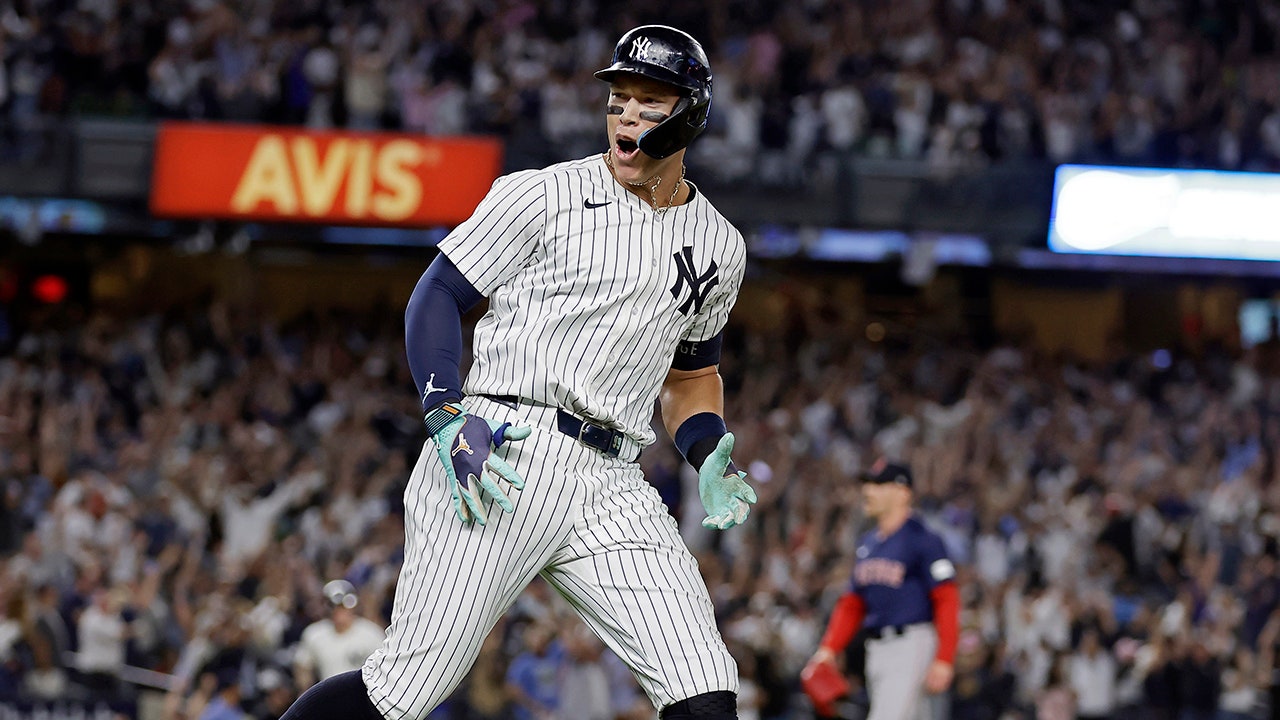
NEWYou can now listen to Fox News articles!
For the New York Yankees, it is always World Series or bust.
Of course, the Bronx Bombers have 27 titles to their name, and that includes a record 18-year drought from 1978 to 1996. But, after a new dynasty won four titles in five years, expectations changed once again.
The Yankees, still, are a perennial postseason team, not having finished under .500 since 1993. Former MLB star Alex Rodriguez knew all about the expectations when he went from the Texas Rangers to the Yankees in 2004.
Rodriguez made the postseason in all but three of his seasons with the Yankees (not including when he missed the 2014 season due to suspension). But today, he is part owner of the Minnesota Timberwolves and Minnesota Lynx.
New York Yankees outfielder Aaron Judge reacts after hitting a grand slam off Boston Red Sox relief pitcher Cam Booser during the seventh inning of the game at Yankee Stadium in New York on Sept. 13, 2024. (AP Photo/Adam Hunger)
And while on the diamond, anything short of a title was a failure, he admits that as an owner, “you have to adjust” your expectations.
“At the end of the day, it’s so hard to win, and there’s so many different resources. The days of the Yankees winning four out of five years, those days are long gone, because the business models have changed, people are competing from a different point of view, the league structures are different, whether it’s the luxury tax in baseball, there’s different elements that are pushing and pulling,” Rodriguez said in a recent interview with Fox News Digital. “But I think that winning is more being one of the most respected organizations sports to treating your fans an impeccable way, your players or organization, and then your partners, your sponsorships and stuff like that, and then having a consistent winner that has an opportunity to strike every year. So I think when you think about winning and bust-or-nothing, it’s more about the behavior of an organization versus just black and white winning a championship.”
But the Yankees still have All-Star Aaron Judge, who, if it weren’t for the Houston Astros’ Jose Altuve in 2017, would be vying for his fourth MVP Award. His regular-season numbers are astonishing, but so are his postseason stats… in the opposite direction.
Since the start of the 2022 season (entering Thursday), Judge has MLB highs in WAR (30.9), home runs (178) and OPS (1.124). But in October, he’s hit just .205 with a .768 OPS.
Rodriguez was polarizing in New York from day one — he was the superstar shortstop with the largest sports contract of all time who didn’t exactly praise Yankees great Derek Jeter in a now-infamous quote — whereas Judge is much more universally loved, being a homegrown Yankee.
However, that love is not unanimous because of Judge’s postseason struggles. And if he wants to be forever in Yankees lore, Judge “needs” to find success in October, according to Rodriguez.
“I mean, I’m probably the one guy that can answer this from a personal experience more than anybody,” said Rodriguez, who notoriously struggled in autumn with the Bombers before carrying the Yankees to their 2009 World Series title.

Alex Rodriguez reacts after striking out during the game against the Los Angeles Angels at Yankee Stadium in New York on Aug. 13, 2013. (ap)
MLB COMMISSIONER ROB MANFRED TO PROPOSE AUTOMATED STRIKE ZONE IN BASEBALL NEXT SEASON AMID POTENTIAL LOCKOUT
“I can tell you that for me, 2004 was just an absolute debacle, being up 3-0 against the [Boston] Red Sox and then losing four in a row. And for five years, I basically did not sleep comfortably, until five years later in ’09, we brought it home and dropped the hammer. So I think he needs a moment like that. I think he will get one. I think being part of the Yankees and that lore is you’re going to get cracks at it every single year. So that’s on his side, the talent’s on his side, and the more at-bats, the more reps he gets, the chances increase. And when he does, it’s going to be such an enormous win for everybody, and it’s going to be an elephant off his back.”
The Yankees, though, didn’t exactly fare well in their World Series rematch last week against the Los Angeles Dodgers. They dropped two of the three games, including one contest where they were trounced 18-2 (both of the Yankees’ runs came on solo Judge homers).
Rodriguez is a partner with Lysol, which cleans up the stink — and the Yanks certainly could have used some in Los Angeles’ Chavez Ravine. The ex-Yankees slugger recently surprised a local umpire in Miami Beach with some Lysol.
“Umpires are unsung heroes of the game, and it was great to show my appreciation for the work they do on and off the field,” he said. “Lysol is just an incredible company to partner with. We’ve had a tremendous partnership, and one of the things we want to do is make impact in the community and recognize people that often don’t get recognized.”
One player’s impact that the Yankees are certainly missing is that of right-handed pitcher Gerrit Cole. And while the rotation has been a pleasant surprise, even with Cole’s Tommy John surgery and Rookie of the Year Luis Gil’s lat injury, an incomplete Yankees team is no match for the reigning World Series champs, Rodriguez thinks.

Mookie Betts, left, and Freddie Freeman of the Los Angeles Dodgers celebrate after scoring against the New York Yankees during the fifth inning of Game 5 of the World Series at Yankee Stadium in New York on Oct. 30, 2024. (AP Photo/Seth Wenig)
“I think if you zoom out, I think it’s obvious to me with enough data points that the National League is far superior than the American League. So that’s one macro thought. And then obviously, the Dodgers have the Yankees’ number,” Rodriguez said. “It was great that they were able to salvage the series by at least winning one game and not getting swept. But look, when you have someone like Gerrit Cole hurt, the Yankees can still get through some pedestrian teams in the American League, but it’s obvious that when you play the Dodgers, you need your full team and then some, and even that may not be enough.”
Follow Fox News Digital’s sports coverage on X, and subscribe to the Fox News Sports Huddle newsletter.
-

 News1 week ago
News1 week agoVideo: Faizan Zaki Wins Spelling Bee
-

 News1 week ago
News1 week agoVideo: Harvard Commencement Speaker Congratulates and Thanks Graduates
-

 Politics1 week ago
Politics1 week agoMichelle Obama facing backlash over claim about women's reproductive health
-

 Technology1 week ago
Technology1 week agoAI could consume more power than Bitcoin by the end of 2025
-

 News1 week ago
News1 week agoPresident Trump pardons rapper NBA YoungBoy in flurry of clemency actions
-

 Technology1 week ago
Technology1 week agoSEC drops Binance lawsuit in yet another gift to crypto
-

 Technology1 week ago
Technology1 week agoOpenAI wants ChatGPT to be a ‘super assistant’ for every part of your life
-

 World1 week ago
World1 week agoTwo killed in Russian attacks on Ukraine before possible talks in Turkiye


